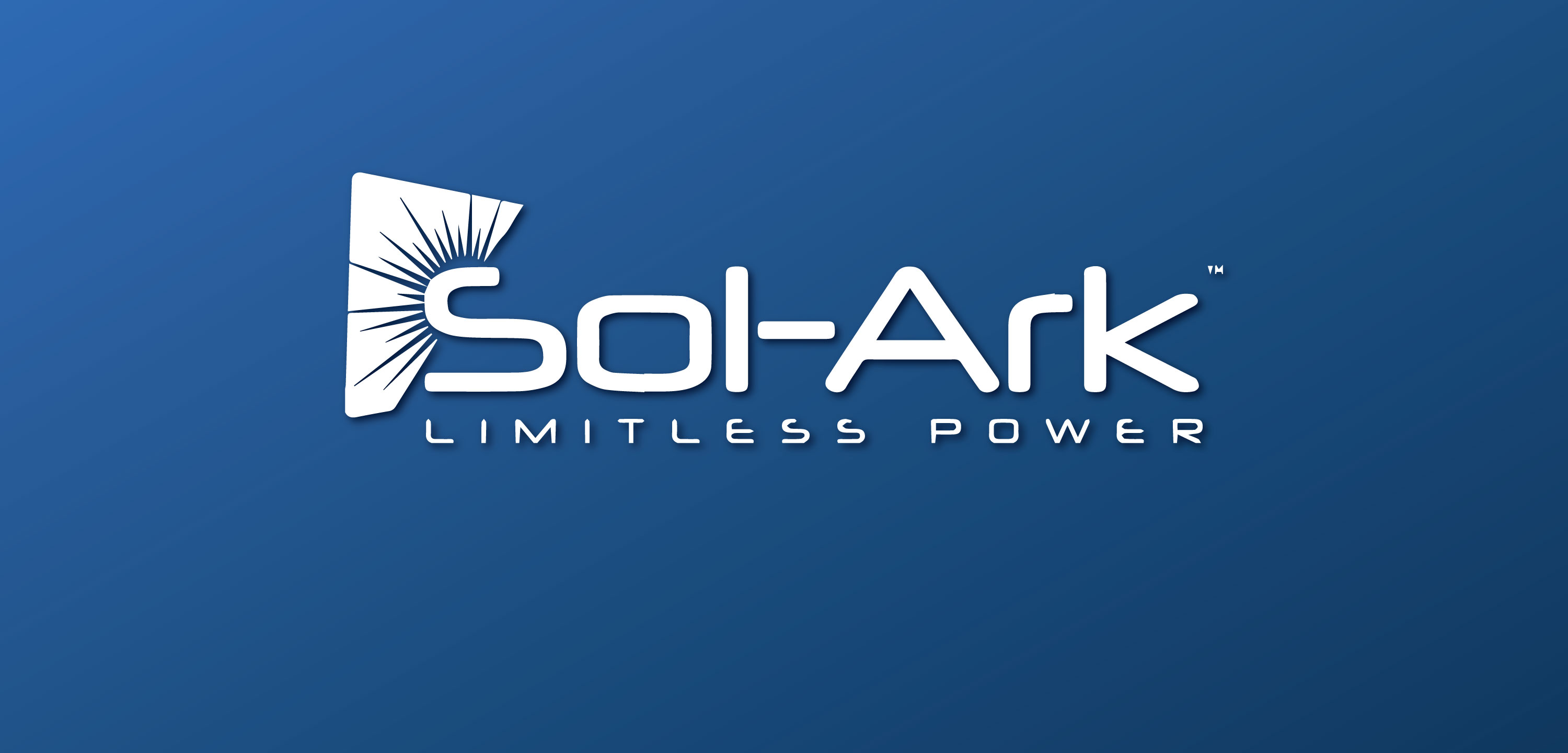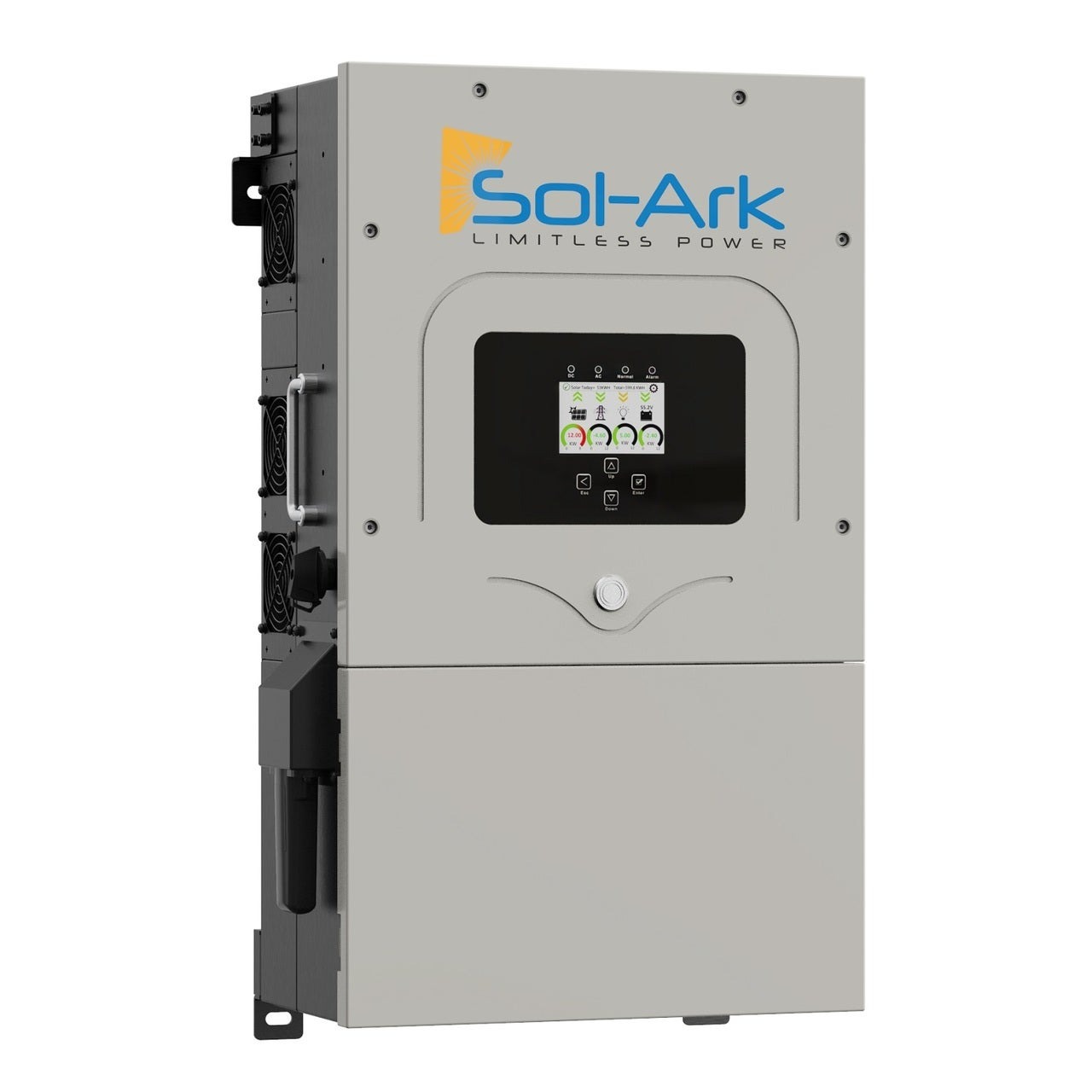Updated 8 months ago
Sol-Ark inverters expert review: should you choose one for your solar installation?
Written by
Ben Zientara

Find out what solar panels cost in your area
If you’re researching equipment for a home solar installation, you may have come across Sol-Ark inverters. Sol-Ark is a well-known and highly-regarded brand that has a reputation for making excellent all-in-one hybrid inverters. They’re beloved in the off-grid and DIY communities, and famous for offering the option to order an inverter that is hardened against electromagnetic pulses (EMPs).
But a Sol-Ark inverter system has advantages when it comes to grid-tied solar installations, too. The brand’s inverters can interface with just about any lithium, lead acid, or AGM deep-cycle battery, meaning you can install one as part of a solar installation and add batteries from any brand you like, at any time. They’re also easy to install, lightweight, and highly efficient.
Let’s explore more about Sol-Ark’s lineup of all-in-one solar inverters!
What you need to know about Sol-Ark inverters:
-
Sol-Ark’s hybrid “all-in-one” inverters can connect solar panels and batteries together for both on and off-grid applications.
-
Sol-Ark is known for being designed and assembled in the USA, and offers phone and email support 7 days a week from its U.S.-based team.
-
The company offers three inverter sizes that can output 5, 8, and 12 kW.
-
Each inverter can accept more PV power than its rated power output, and can be connected to virtually any battery on the market.
-
The Sol-Ark 5K inverter is best for small off-grid setups, the 8K inverter is likely the best choice for a residential on-grid installation, and the 12K is the best option for a full-sized off-grid home setup.
-
In the future, Sol-Ark plans to offer a 15 kW inverter and a smart load management system that will allow people to easily take a whole home off the grid.
Sol-Ark inverter models: 5K, 8K, 12K
Sol-Ark currently sells three models of inverter, with names that correspond to the number of kilowatts (kW) of continuous power output. They are called the 5K, 8K, and 12K lines. Sol-Ark plans to begin selling a 15 kW inverter (called the “15K” of course) later in 2022.
All of Sol-Ark’s inverters come with some important specifications that have made them the preferred choice of the DIY off-grid community. Their interface, transformerless architecture, and all-in-one hybrid design make them easy to install and use, and Sol-Ark’s support ensures its customers have a successful experience.
Transformerless architecture
All of Sol-Ark's inverters are transformerless, which means they use electronic components to control voltage. Transformers are bulky and heavy, which means a transformerless inverter is more compact and lighter, making it easier to install. In addition, a transformerless inverter is more efficient and produces less heat than a conventional inverter.
With that said, there are also drawbacks to transformerless architecture. In general, a transformerless inverter is more prone to surges and shocks, although Sol-Ark has overcome these issues. One issue it hasn’t overcome is its inability to start large 120V induction motors, like those found in many window air conditioners, power tools, and other appliances.
For most people, this drawback of transformerless inverters won’t be an issue. This would only be a problem if you intend to use these high-startup current devices in an off-grid situation. Most people will use a Sol-Ark inverter to connect a battery bank to a critical loads panel, only running certain circuits in their home when the grid goes down.
People living off-grid who need to provide full power to their home have tried various ways of working around this, such as re-wiring 120V motors to 240V (when possible), and using some propane-fueled appliances to avoid drawing too much current.
Off-gridders can even add a second Sol-Ark inverter in parallel in order to start up large motors off the grid, but the best solution seems to be pairing the Sol-Ark inverter with an autotransformer, like solar technician Ben McFeeters does in this video:
All-in-one hybrid design
Secondly, Sol-Ark inverters are all-in-one hybrids, meaning they can accept AC or DC input power from solar, the grid, or generators, and then output that power to batteries and loads (i.e., appliances and other things that require power). All Sol-Ark inverters have auto-generator start capability.
Most solar inverters do a simple thing: convert DC power from solar panels to AC power that is usable in a home. In order to use batteries, you need a hybrid inverter, but then also need to add a charge controller, battery communications relay, and other equipment.

Sol-Ark’s inverters all come inside the same sized NEMA 3R enclosure. Image source: Shop Solar Kits
Sol-Ark’s all-in-one hybrid inverters contain all of that additional equipment within a single unit.
Each model comes with two MPPT charge controllers, and also provides communications with battery management systems (BMS) to ensure high efficiency. In addition, Sol-Ark inverters feature proprietary technology that allows them to transfer from grid power to backup power in 4 milliseconds, which is quick enough that most appliances don’t experience any glitches.
Other features of all Sol-Ark inverters include built-in arc fault and ground fault detection. The 8K and 12K inverters come with integrated rapid shutdown, which is optional on the 5K.
Interface, service, and support
Finally, all Sol-Ark inverters come with a color touchscreen that is easy to read. It’s also easy to set up all the functions the inverter can handle, including the ability to set up Time of Use rules, so battery backup power is used when electricity from the grid is expensive.
The inverter also comes with a WiFi dongle to connect the inverter to the internet, and the PV Pro App for remote monitoring.
All together, the features of Sol-Ark inverters make them very easy to install, use, and maintain. The company’s engineering team in Plano, TX also provides direct phone and email support 7 days a week. This level of support stands in stark contrast to some other inverter manufacturers, who have offshore call centers and don’t provide the level of support that American customers like.
Comparing Sol-Ark’s three inverter models
In addition to these common features, each model line offers its own functionality, warranty, and set of options, and comes at its own MSRP. Here’s a table showing the models and their differences.
Table 1. Sol-Ark inverter models, compared
Model | Continuous AC output | Warranty | MSRP |
|---|---|---|---|
5,000W | 5 years | $4,500 | |
8,000W | 5/10 years* | $6,100 | |
9,000W + 3,000W DC to batteries | 10 years | $6,900 |
*The Sol-Ark 8K comes standard with a 5-year warranty that can be extended to 10 years for an additional $500
Here’s a little more about each of the models listed above:
Sol-Ark 5k
The 5K is Sol-Ark’s smallest inverter, and is mainly meant for small off-grid applications. It supports up to 6,500W of DC solar input (3,250 for each of its MPPT charge controllers), and up to 9,600W of AC input from microinverters or a separate solar string inverter. It also allows for a backup generator to charge the battery bank.
As its name implies, the 5K can output a mix of up to 5,000W of AC power to either the grid or the home (in an off-grid situation), or 5,000W of DC power to a battery bank. It can provide 240V surge power up to 16,000W for 10 seconds or 25,000W for 100 milliseconds. The 5K cannot be stacked in parallel with other 5K inverters.
The 5K comes with a 5-year standard warranty.
Sol-Ark 8k
The 8K is the big brother to the 5K, with many of the same specs. This inverter is likely the best choice for a residential on-grid installation or modest off-grid home. Its two MPPT charge controllers can accept 5,500W each of DC solar input, for a total of 11,000W, or up to 9,600W of AC input from microinverters or a separate solar string inverter. It also allows for a backup generator to charge the battery bank.
The 8K can output up to 8,000W to a mix of AC loads, the grid, or a battery bank, and can surge up to 16,000W for 10 seconds to start a 240V motor. Like the 5K, the 8K cannot be stacked in parallel. The 8K comes with a 5-year standard warranty, which can be extended to 10 years for an additional $500. The inverter is also available with EMP hardening.
Sol-Ark 12k
The 12K is Sol-Ark’s largest currently-available inverter (with the 15K coming soon). It is the best option for a full-sized off-grid home setup, and can also be used in commercial and industrial settings because of its ability to stack in parallel with other 12K units.
The 12K’s two MPPT charge controllers can each accept 6,500W of DC solar input for a total of 13,000W. It can deliver a total of up to 12,000W to AC loads, the grid, and batteries, with a 9,000W limit to any one output. It can also accept up to 9,600W of AC input from microinverters or a separate solar string inverter, and can charge the battery bank from an external generator.
The 12K can surge to 16,000W for 10 seconds to start a 240V motor, or up to 25,000W for 100 milliseconds. Unlike the 5K and the 8K, the 12K can be stacked in parallel with other 12K inverters. Parallel stacking can allow at least three (and up to nine) 12K inverters to run a 120/240/208V 3-phase system, and up to eight 12K inverters can be stacked in a split-phase system.
The 12K comes with a 10-year warranty, and can also be hardened against an EMP.
The final word on Sol-Ark inverters
Sol-Ark inverters have a well-deserved reputation for being flexible, functional inverters that are easy to use, install, and troubleshoot.
They’re designed and assembled in the USA, with the engineering team ready to assist both installation professionals and DIYers. They cost a little more than other options on the market, but make up for it with features and functions that do more than just about any other brand’s inverters - in a single box.
The advantages of using Sol-Ark in a residential grid-tied setup are the flexibility its products provide and their unique abilities as described above. The freedom to use basically any battery on the market is a huge advantage, and Sol-Ark is working on providing closed communications with many battery manufacturers, including SimpliPhi and HomeGrid.
In addition, Sol-Ark inverters can be used to save money on your electric bill; their programmable interface allows you to select modes like peak shaving and grid sell so you can maximize your savings.
In the future, the company plans to introduce a new “limitless” inverter alongside a smart load management system that should allow a single inverter to control all the circuits in a home on or off the grid.
Ben Zientara is a writer, researcher, and solar policy analyst who has written about the residential solar industry, the electric grid, and state utility policy since 2013. His early work included leading the team that produced the annual State Solar Power Rankings Report for the Solar Power Rocks website from 2015 to 2020. The rankings were utilized and referenced by a diverse mix of policymakers, advocacy groups, and media including The Center...
Learn more about Ben Zientara